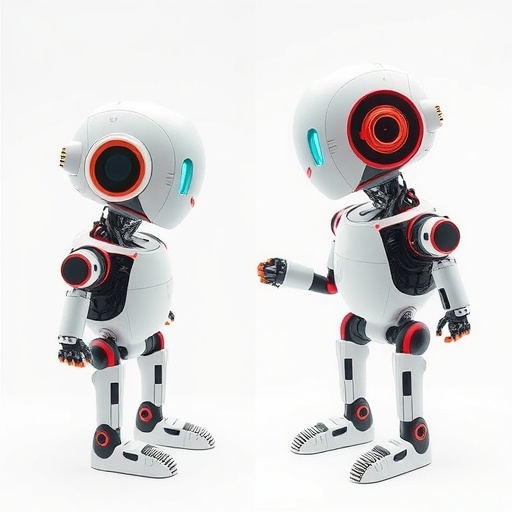
In the world of robotics, the ways in which machines learn and coordinate tasks are becoming increasingly sophisticated. Recent advances have highlighted a notable edge that humans possess – the ability to empathize and anticipate each other’s actions through a cognitive framework known as Theory of Mind. This human-like trait has now been harnessed by researchers at Duke University and Columbia University to enhance collaborative behaviors among groups of robots. Introducing a new framework dubbed HUMAC, these researchers have laid the groundwork for a revolutionary approach to robot coordination that could reshape applications in critical fields such as disaster response and environmental monitoring.
Unlike traditional robotic interactions characterized by hive mind behaviors, where each robot operates mainly in a reactive manner with limited foresight, HUMAC allows for the integration of human input in a way that mimics human strategic thinking and decision-making. As a result, the framework enables robots to function cohesively as a team, attributing a level of predictive capability to their interactions. This innovative approach creates a profound departure from earlier methods that relied heavily on reinforcement learning or imitation learning, often leading to inefficiencies and unmet expectations in robotic collaboration.
The essence of HUMAC lies in its ability to allow a single human operator to guide multiple robots through targeted interventions at crucial moments. This process can be likened to a sports coach who takes control of players during pivotal aspects of a game. Such directional actions demonstrate novel strategic collaborative tactics, including ambush strategies and coordinated encirclement maneuvers. This emphasizes not only the potential for more efficient teamwork among robots but also allows for real-time adaptability in dynamic environments.
HUMAC has undergone rigorous testing, particularly within a controlled hide and seek scenario. Three seeker robots, equipped with limited visual capabilities, are tasked with identifying three faster-moving hider robots within an arena laden with obstacles. Noteworthy results emerged during these trials, showcasing a dramatic increase in the success rate of robot teams collaborating under the guidance of their human coach; after only 40 minutes of intervention, the collaboration success rate soared to 84%, a stark contrast to the mere 36% achieved by non-cooperative seeker robots.
The significance of these results cannot be overstated. When robots began to exhibit behaviors akin to genuine teamwork – effectively predicting and adapting to one another’s moves without explicit commands – it marked a substantial step toward the development of autonomous teams capable of executing complex tasks. Researchers noted a captivating transformation in behavior, leading to the realization that these machines could emulate aspects of human-like collaboration in intelligent and adaptive ways.
As the implications of HUMAC become clearer, it opens a Pandora’s box of possibilities for real-world applications. For instance, imagine a fleet of drones working collectively to conduct search operations in the aftermath of natural disasters. Their ability to navigate through debris without duplicating efforts could save countless lives, expedite recovery efforts, and ultimately leverage the efficiency of technology to enhance humanitarian aid initiatives.
The framework’s design and resulting functionalities reflect a crucial evolution in the relationship between humans and AI. Rather than viewing AI as merely a tool, it is emerging as a collaborative partner, raising profound questions about the future of intelligent systems and deepening collaboration between humans and robots. Subsequently, HUMAC represents a pivotal advancement not only in robotics but also in the burgeoning field of human-robot interaction.
The achievement becomes even more poignant when considering the timing; it signals a transitional phase in how we conceive of multi-agent systems. As the need for intelligent autonomous systems grows, researchers are exploring new methods for scaling HUMAC’s capabilities beyond small robot teams, aiming to encompass more sophisticated environments and complex challenges. This research underscores a commitment to deepening human-robot interaction and realizing the vast potential inherent in collaborative systems.
With the advent of HUMAC, we stand on the brink of a revolution in robotic collaboration that echoes evolutionary journeys previously experienced by humans. As AI continually learns and adapts through these frameworks, we can anticipate not only enhanced operational efficiencies but also the forging of connections that bridge the gap between humans and machines. This holistic endeavor advocates a future where intelligence is both distributed and collective, enhancing our ability to tackle multifaceted problems that lie ahead.
Beyond intriguing theoretical insights, the practical applications of HUMAC are numerous and span a multitude of domains. From agriculture that utilizes robotic systems to monitor and manage crop health to exploration missions that deploy autonomous units across inhospitable terrains, the foundational principles emerging from this study will undoubtedly influence myriad sectors. Researchers are currently dedicated to methodically exploring how HUMAC can enhance robots’ interactions and increase their adaptive capacity in increasingly complex situations.
Moreover, the potential expansion of HUMAC, engaging larger teams of robots and incorporating diverse interaction modalities, signifies that we are merely scratching the surface of what this research can accomplish. As researchers refine the interface between human input and robotic execution, we can expect a new chapter in robotics that redefines collaboration in unprecedented ways. The ongoing dialogue around AI and multi-agent systems will gain momentum, urging a reevaluation of our assumptions about intelligence, agency, and partnership in technology.
As with all pioneering work, the development of HUMAC is accompanied by a host of challenges and uncertainties. The field of robotics is rapidly evolving, and with it comes the imperative for researchers to address ethical considerations around AI decisions, safety protocols, and the socio-economic implications of deploying autonomous systems. Nevertheless, the strides being made through HUMAC are an illuminating glimpse into a future where collaboration between humans and machines flourishes, enhancing our capabilities while redefining the boundaries of possible cooperation.
Subject of Research:
Article Title: Enabling Multi-Robot Collaboration from Single-Human Guidance
News Publication Date: 19-May-2025
Web References: HUMAC Project Website
References:
Image Credits:
Keywords
Tags: advanced robotic coordinationcognitive frameworks in roboticsdisaster response roboticsempathetic robotsenvironmental monitoring with robotsHUMAC framework for robotshuman-like robot behaviorinnovative robotic learning methodspredictive robot interactionsrobot collaborationstrategic decision-making in roboticstheory of mind in robotics





